39 on a hertzsprung-russell diagram, where would we find stars that have the largest radii?
On a Hertzspring-Russell diagram, where on the main sequence would we find stars that have the greatest mass? Nov 10, 2016 · On a hertzsprung russell diagram where would we find stars that have the largest radii. On a hertzsprung russell diagram where would we find red giant stars. See all questions in life and death of stars impact.
On a Hertzsprung-Russell diagram, where would we find stars that have the largest radii? Astrophysics Astrophysics Basics The Hertzsprung-Russell Diagram. 1 Answer AltairSafir Mar 30, 2018 The radius of the stars is represented as diagonal on a HR diagram in logarithmic scale. Stars with largest radii are on the top diagonal of the HR diagram.
On a Hertzsprung-Russell diagram, where would you find stars that are cool and have low luminosities? lower right A star of spectral type B with a mass of 10 times the mass of the Sun will last approximately how long on the main sequence?
On a hertzsprung-russell diagram, where would we find stars that have the largest radii?
A Herzsprung-Russell Diagram is a way of trying to find a pattern of the known stars by organizing them by Luminosity and temperature. The graph has attempted to graph the characteristics of stars using a linear function, originating from the Stefan-Boltzmann law of Blackbody radiation (as stars can be considered as black bodies- i.e an object that is a perfect absorber)
On a Hertzsprung-Russell diagram, where would we find stars that have the largest radii? A) upper right B) lower right C) upper left D) lower left. A. On a Hertzsprung-Russell diagram, where on the main sequence would we find stars that …
Which of the following best describes the axes of a Hertzsprung-Russell (H-R) diagram? ... where would you find stars that have the largest radii? upper right. ... The most distant stars we can measure stellar parallax for are approximately. 100 parsecs away.
On a hertzsprung-russell diagram, where would we find stars that have the largest radii?.
On A Hertzsprung-russell Diagram, where Would We Find Stars that Have the Largest Radii? chapter 15 flashcards b a star with apparent magnitude 1 is brighter than one with apparent magnitude 2 c the absolute magnitude of a star is another measure of its luminosity d a star s absolute magnitude is the apparent magnitude it would have if it were at a distance of 10 parsecs from earth e all of ...
On a Hertzsprung-Russell diagram, where would we find stars that are cool and luminous? upper right lower right upper left lower left Upper right 15 On a Hertzsprung-Russell diagram, where would we find stars that have the largest radii? upper right lower right upper left lower left Upper right 16
On a Hertzsprung-Russell diagram, where would we find stars that are cool and luminous? Upper right. On a Hertzsprung-Russell diagram, where would we find stars that have the largest radii? upper right. On a Hertzspring-Russell diagram, where on the main sequence would we find stars that have the greatest mass?
f) Lines of ionized helium occur only in hot stars, so stars A and C could show strong lines of ionized helium. g) C is a white dwarf. h) Stars B and E could have lines due to molecules in their spectra because only very cool stars show molecular lines. 4. K5 main sequence and giant stars have the same surface temperature; that's what 'K5' means.
14) On a Hertzsprung\'2DRussell diagram, where would we find stars that are cool and luminous? A) upper right B) lower right C) upper left D) lower left . 15) On a Hertzsprung\'2DRussell diagram, where on the main sequence would we find stars that have the greatest mass? A) upper right B) lower right C) upper left D) lower left
This diagram was first made independently in 1911 by Danish astronomer Ejnar Hertzsprung (1873-1967) who plotted the diagram for nearby clusters of stars (the Hyades and Pleiades), and American astronomer Henry Norris Russell (1877-1957) who plotted the diagram for nearby stars in 1913. The form of the diagram we use today is Russell's.
On a Hertzsprung-Russell diagram, where would we find stars that are cool and dim? lower right. On a Hertzsprung-Russell diagram, where would we find stars that have the largest radii? upper right. Astronomers can measure a star's mass in only certain cases. Which one of the following cases might allow astronomers to measure a star's mass?
Classifying Stars - the Hertzsprung-Russell Diagram. There are a few hundred billion stars in our galaxy, the Milky Way and billions of galaxies in the Universe. One important technique in science is to try and sort or classify things into groups and seek out trends or patterns. Astronomers do this with stars.
Red stars are placed on the right whereas hot blue stars are on the left. A hertzsprung russell diagram or h r diagram is a graph of stellar temperatures plotted on the horizontal axis and luminosities or brightnesses plotted on the vertical axis. It is also used to plot the color of the stars against their magnitude.
On a Hertzsprung-Russell diagram, where would we find stars that have the largest radii? upper right. On Hertzsprung- Russell diagram where we find white dwarfs? lower left. on the main sequence, stars obtain their energy. by converting hydrogen to helium.
On a Hertzsprung-Russell diagram, where would we find stars that have the largest radii? upper right. On a Hertzsprung-Russell diagram, where on the main sequence would we find stars that have the greatest mass? upper left. On a Hertzsprung-Russell diagram, where would we find red giant stars? upper right. On a Hertzsprung-Russell diagram ...
Radii of stars can be measured in meters, but because stars are so very large that its much more convenient to measure stellar radii in units of the Sun's radius, where 1 R⊙ = 6.96 x 10 8 m. The Hertzsprung-Russell Diagram A graph of the temperature and luminosity of stars is called the Hertzsprung-Russell Diagram
a) The magnitude system that we use now is based on a system used by the ancient Greeks over 2,000 years ago that classified stars by how bright they appeared. b) A star's absolute magnitude is the apparent magnitude it would have if it were at a distance of 10 parsecs from Earth.
On a hertzsprung russell diagram where would you find stars that are cool and luminous. A stars absolute magnitude is the apparent magnitude it would have if it were at a distance of 10 parsecs from earth. A low mass stars are cooler and less luminous than high mass stars. Main sequence stars have a morgan keenan luminosity class.
Which of the following best describes the axes of a Hertzsprung-Russell (H-R) diagram? ... where would we find stars that have the largest radii? Definition. upper right: Term. You observe a star in the disk of the Milky Way, and you want to plot the star on an H-R diagram. You will need to determine all of the following, except the:
The Hertzsprung-Russell Diagram. Astrophysics Astrophysics Basics The Hertzsprung-Russell Diagram. Questions. On a Hertzsprung-Russell diagram, where would we find stars that have the largest radii? What is the H-R diagram? Astrophysics Basics. View all chapters. The Electromagnetic Spectrum.
19) On a Hertzsprung\'2DRussell diagram, where would we find stars that are cool and luminous? A) upper right B) lower right C) upper left D) lower left . 20) A star's luminosity is the . A) apparent brightness of the star in our sky. B) surface temperature of the star. C) lifetime of the star.
On a hertzsprung russell diagram where would we find stars that have the largest radii. C upper left. D lower left. They have low surface temperatures and high luminosities which according to the stefan boltzmann law means they also have large radii. Main sequence stars have a morgan keenan luminosity class labelled v.
The key point to remember when considering the Hertzsprung-Russell (H-R) diagram of a star cluster in determining the evolution of stars is that all of the stars in the star cluster have the same: asked Jun 6, 2017 in Physics & Space Science by Nathalia
This Hertzsprung-Russell diagram shows a group of stars in various stages of their evolution. By far the most prominent feature is the main sequence, which runs from the upper left (hot, luminous stars) to the bottom right (cool, faint stars) of the diagram. The giant branch is also well populated and there are many white dwarfs.
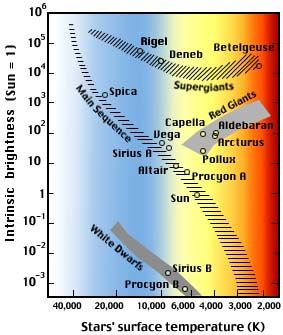
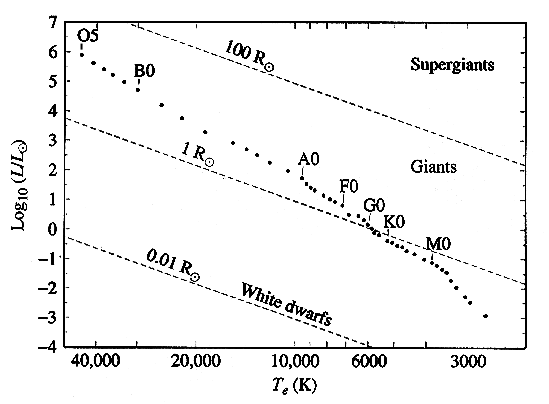
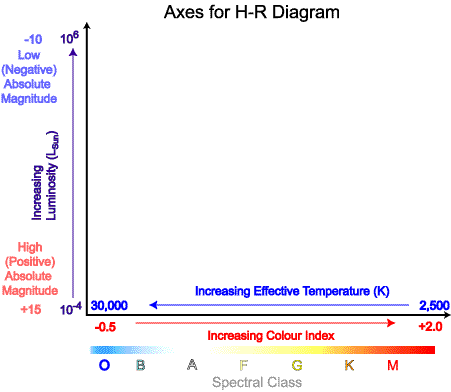
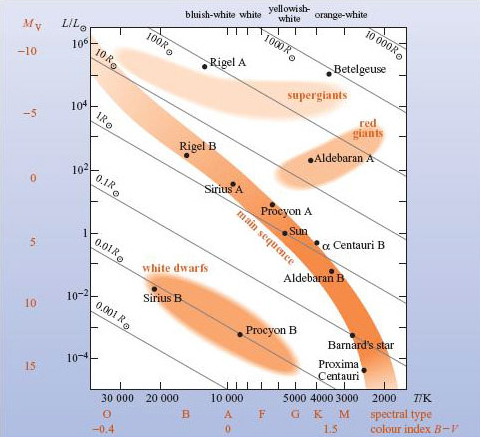


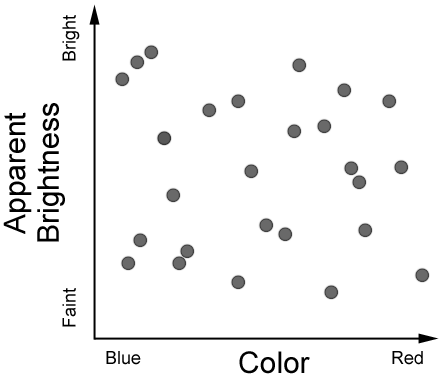
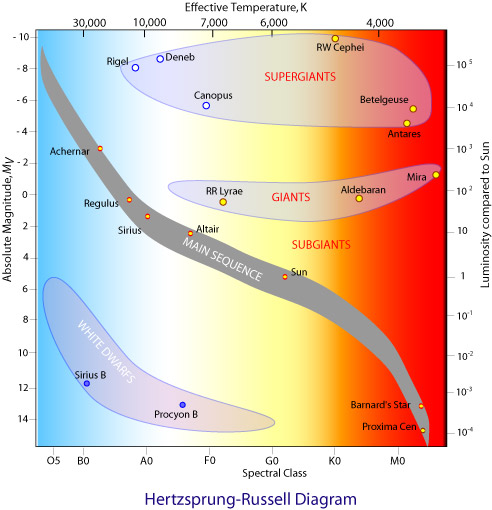
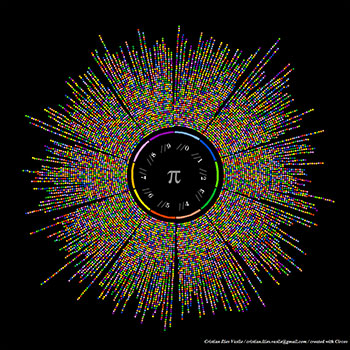

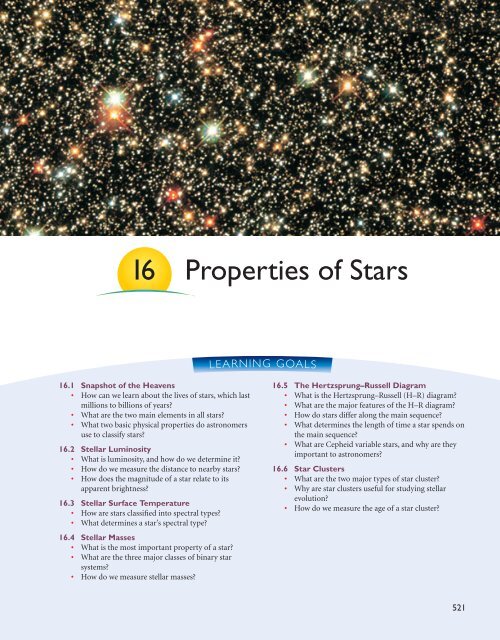

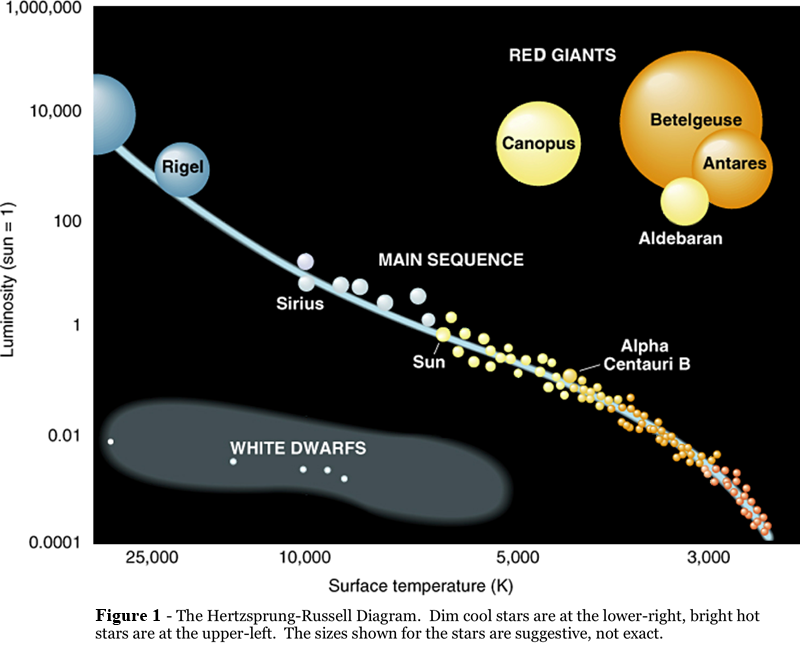




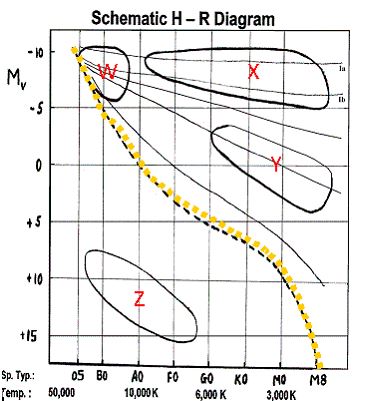



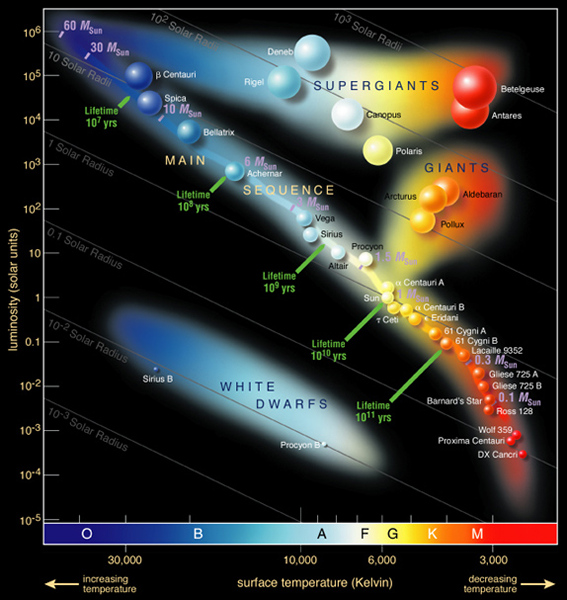

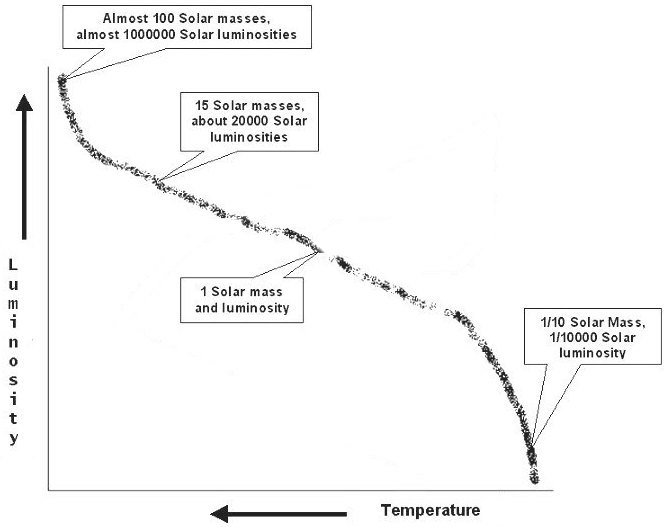


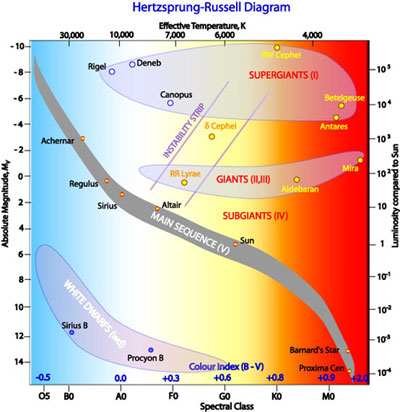
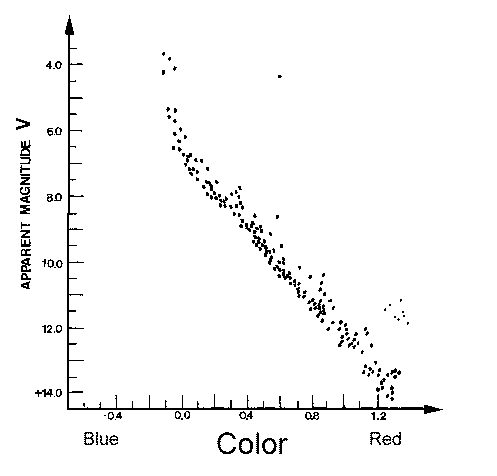


0 Response to "39 on a hertzsprung-russell diagram, where would we find stars that have the largest radii?"
Post a Comment